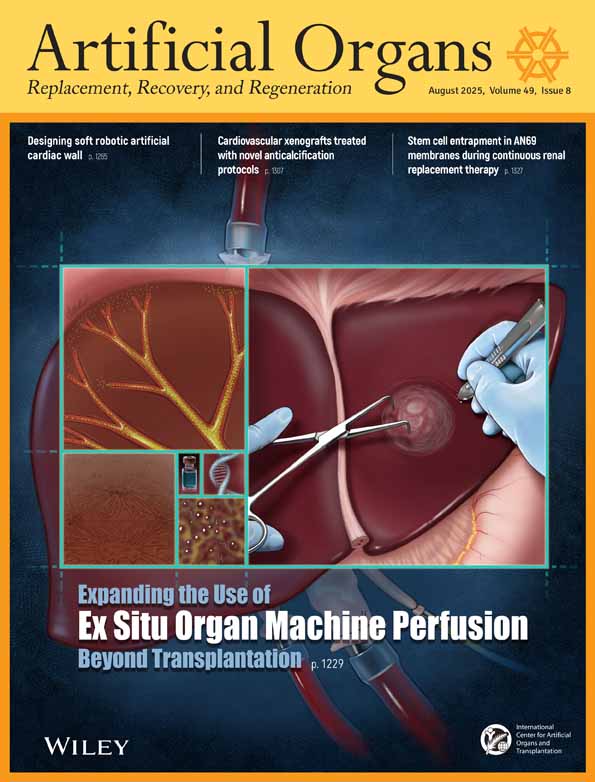A Novel In Vitro Assessment of Tissue Valve Calcification by a Continuous Flow Type Method
It is the goal of this section to publish material that provides information regarding specific issues, aspects of artificial organ application, approach, philosophy, suggestions, and/or thoughts for the future.
Abstract
Abstract: A dynamic flow type testing to study calcification was self-designed to investigate calcification in bioprosthetic heart valves. The apparatus consists of a container into which leaflets from a porcine aortic valve are placed, a chamber that contains calcium solution, and a peristaltic pump that provides a continuous supply of the solution toward the container. Efficacy of the apparatus was compared with the conventional batch type calcification testing at 37°C through measuring the amount of calcium and phosphate deposited by inductively coupled plasma (ICP) and scanning electron microscope (SEM). After 14 days, calcium levels detected from the calcified deposit on leaflets were 470.4 ± 37.0 μg/cm3 in the flow type testing whereas in the batch type testing levels were 81.0 ± 6.7 μg/cm3. Though the calcium level on the leaflet increased as the exposure time to calcium solution increased in both testings, the rate and the tendency of calcification could be assessed very rapidly by flow type testing in comparison with batch type testing. [Ca]/[P] molar ratio decreased over time, and after 14 days, the ratio was close to 1.83 ± 0.18 in the flow type testing. The ratio could not be determined in the batch type testing because the deposit was too small to assess. The descending rate of [Ca]/[P] molar ratio demonstrates that deposited calcium-complex at the earliest stage may interact with inorganic phosphate ions to create a calcified deposit mineral precursor. This in vitro dynamic flow type calcification testing was a favorable tool for rapid investigation of calcification.




